50 Best Places to Travel in 2020 When Planning Your Vacation
What makes a place worth visiting right now? That’s what we at Travel + Leisure ask ourselves when compiling our annual list of the 50 best places to travel. Is it a show-stopping new hotel? A once-in-a-lifetime celebration? A critical mass of game-changing restaurants?
For definitive answers on the best vacation spots of the moment, we hit the books, scouring tourism statistics, scoping out major events, charting new flight routes, and logging hotel debuts. We take stock of the most compelling new restaurant openings, scroll through the Instagram posts of our most well-traveled pals, and mine our inboxes for tips. We also survey our vast network of travel experts — T+L’s A-List travel advisors, first, plus trusted writers, hospitality insiders, and other industry pros — to see what places they have their eyes on.
Related: Guide to more travel ideas
The result is a list of must-visit vacation destinations, and with something to suit every interest — food, shopping, culture, history, and nature — one is bound to spark your wanderlust. We’ve got traveler favorites like Costa Rica and Austria, which are making waves in the months ahead. There are vacation spots still flying under the radar, like a tiny coastal surf town in Denmark, or Guyana, a South American idyll that has a fraction of the crowds of its neighbors. There are even places in your own backyard worth a closer look — who would’ve guessed just a few years ago that Oklahoma City would become this red-hot?
So, we ask you: where will your travels take you this year? On a wine-soaked river cruise through Portugal? To a ryokan-style luxury hotel in a serene corner of Kyoto? To a chic cabin in Maine for a feast of oysters plucked fresh from the sea?
Ahead, Travel + Leisure’s 50 best places to travel in 2020, listed in alphabetical order. If you already have travel plans lined up for the coming year, share your vacation destination picks with us on social media with #TLBestPlaces.
1. Addis Ababa, Ethiopia

For much of the past four decades, Menelik Palace loomed over Addis Ababa as a symbol of imperial imposition. Now, nearly two years into his term and with a Nobel Peace Prize already under his belt, the country’s reformist prime minister, Abiy Ahmed, has opened the 19th-century palace to the public and tapped local artist Elias Sime to build a public garden, slated to open midyear alongside the once-forbidding space. It’s the latest sign that something has shifted in Ethiopia’s capital — and thanks to a major expansion of Addis Ababa’s airport that’s tripled capacity and brought new routes, U.S. travelers can easily witness the change firsthand. Last year, Sime and his partner, the curator and cultural anthropologist Meskerem Assegued, opened the Zoma Museum after a 20-year planning and building process. Situated in the Mekanisa neighborhood, the museum blends Ethiopia old and new, using vernacular architecture as a backdrop for contemporary art — including some of Sime’s own pieces. In its attention to both traditional and modern influences, Zoma parallels the aims of Addis Foto Fest, a biennial photography festival that will be held again in December 2020. Until then, find work by the country’s finest artists on display at institutions such as St. George Gallery, Addis Fine Art, and LeLa Gallery. —Hannah Giorgis
2. Arequipa, Peru
%image1
The preserved colonial architecture of “the White City” — so named for its gleaming structures made from sillar, a volcanic rock — earned the historic center of Arequipa UNESCO World Heritage status in 2000. But a dearth of upmarket lodgings has kept this Peruvian destination off most travelers’ radar. Now, the town finally has accommodations befitting the local history: August saw the opening of Cirqa, originally built in 1540, the year Arequipa was founded, as an inn for guests of the Church of San Agustín next door. The property marries preserved elements of the original parador — high vaulted ceilings, textural stone walls — with contemporary flourishes, such as black-steel-framed windows and a plunge pool. Further steeped in history is the cuisine at La Nueva Palomino, where a female-led staff cooks hearty stews from heirloom recipes. It’s all best enjoyed while admiring the three volcanoes in the distance (Chachani, Misti, and Pichu Pichu) with a tall glass of chicha, an Andean beer made from corn. —Scott Bay
3. Asheville, North Carolina
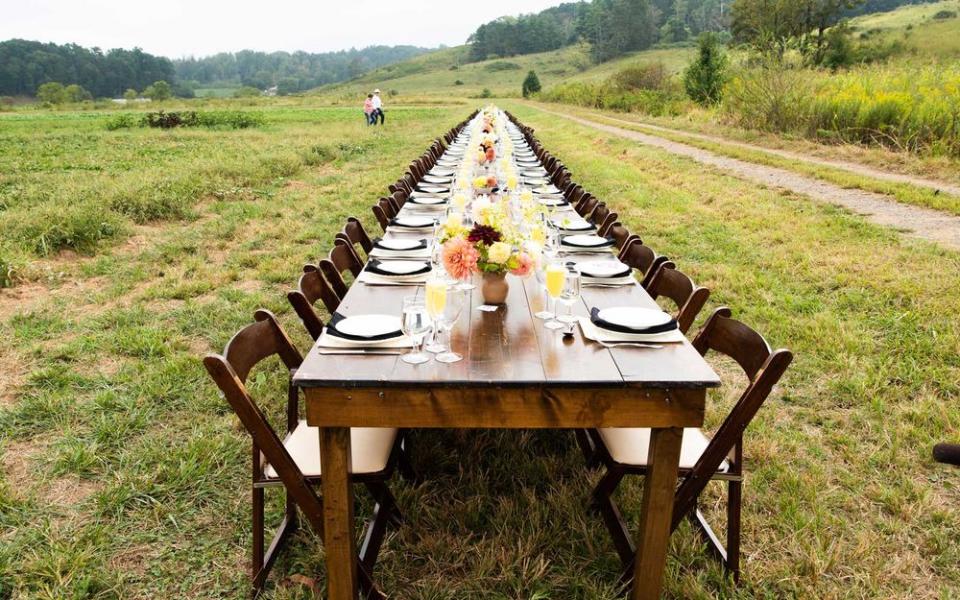
With a small-town feel and big-city cultural cred, Asheville, North Carolina is home to artists, musicians, and food and drink entrepreneurs who were making microbrews and serving farm-to-table meals long before such things were de rigueur. Now the mountain town is becoming more traveler-friendly than ever, with new offerings that showcase the sophisticated side of Appalachia. The Asheville Art Museum reopened in November with 70 percent more gallery space, including a new wing and rooftop sculpture garden. Last September, the city hosted the inaugural Chow Chow, an Appalachian food festival featuring chefs like Katie Button and John Fleer. There’s a slew of new watering holes, like cocktail bar and live-music venue Asheville Beauty Academy and neighborhood cocktail joint the Golden Pineapple. And Beer City still lives up to its nickname, with new openings like Burial Beer Co’s Forestry Camp Restaurant and Bar, set on a former Civilian Conservation Corps compound; Cultura, a restaurant from the Wicked Weed Brewing team; and Dssolvr, a taproom that goes beyond beer with experiments in cider, mead, wine, and more. Downtown, the Foundry Hotel and Hotel Arras both arrived in 2019, adding lively, urbane alternatives to the scene. —Lila Harron Battis
4. Austria

Not long ago, Austria was viewed as the meringue of the Germanic world: beautiful to look at, yet somewhat dry when one actually bit in. But the country has reinvented itself, pouring resources into cutting-edge arts institutions while lovingly elevating the cultural jewels that made it so beloved in days gone by. In Vienna, a wave of new hotels is catering to a younger, hipper crowd. None is more emblematic of the changing capital than the Andaz Vienna Am Belvedere, part of a more than $240 million development project surrounding the city’s central train station, which was completely rebuilt in 2015. Across the street, one of Vienna’s preeminent venues for contemporary art has been rechristened the Belvedere 21, and the nearby Belvedere palaces, two Baroque buildings filled with classical art, have been beautifully renovated. Over in the ninth district, the Freud Museum has moved into two temporary locations while its main building readies for a May reopening; the expanded space will give access to Freud’s family quarters and add a nearly 40,000-volume library. It’s also a celebration-packed year for Austria’s classical music world. The legendary concert hall Musikverein turns 150, and this year marks the 250th anniversary of Beethoven’s birth. His party in Vienna will last through 2020, with events like a weeks-long series of all of his symphonies by the Vienna Philharmonic and dozens of concerts at Wiener Konzerthaus and Musikverein. Plus, the world-renowned Salzburg Festival celebrates its centennial this summer with theatrical premieres and performances ranging from avant-garde chamber music to lavish productions of opera classics such as Tosca, Don Giovanni, and Elektra. —John Wray
5. Baja Sur’s East Cape, Mexico

Just when you think the Baja buzz has reached a fever pitch, new arrivals make it all the more thrilling. This year, the locus of the excitement has shifted away from the towns of Cabo San Lucas and San José del Cabo up to the East Cape, where a dreamy new 1,000-acre luxury enclave has finally come to fruition near Los Barriles. The Four Seasons Resort Los Cabos at Costa Palmas opened in October, with 141 rooms overlooking the placid Sea of Cortéz, and the Costa Palmas Beach & Yacht Club is welcoming members and hotel guests to its pools, golf course, two miles of beachfront, and — should you need a place to park your superyacht — a glittering, lake-size marina. Keep an eye out in 2021 for the arrival of Amanvari, Aman Resorts’ corner of Costa Palmas, with 20 villas and 24 residences. But all of that is merely the gateway to the real draw: An undisturbed corner of Baja where desert, mountains, and water meet. —Lila Harron Battis
6. Barbados
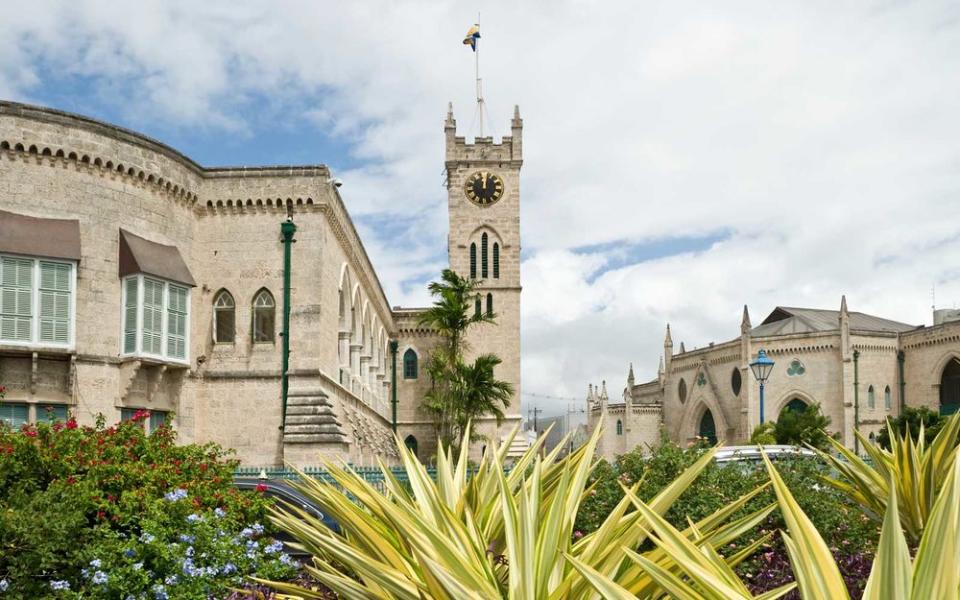
This 166-square-mile island on the eastern edge of the Caribbean is largely famous for its powder-white beaches, British-colonial roots, manifold rum shops, and native daughter Rihanna. Recently, the country’s first female prime minister, Mia Mottley, sent out a rallying cry for anyone with Bajan roots to return to the island in 2020 to partake in a year-long calendar of events celebrating Bajan heritage and culture. The 52-week festival, dubbed “We Gatherin’,” will launch in January and travel to all 11 parishes before culminating in a country-wide blowout in December. Visitors can expect lively street parades, traditional eats like flying fish and cou-cou, live soca music, and must-see jamborees such as the carnivalesque Crop Over Festival, Food & Rum Festival, and Oistins Fish Festival. Away from the action, the 40-suite hideaway Cobblers Cove just emerged from a five-year renovation and now sparkles with coral stone floors, local artwork, and original rattan furniture. In addition to surfing and diving, active travelers can take advantage of the hotel’s new coast-to-coast hiking experience or participate in the Walkers Reserve’s new lineup of outdoor pursuits. —Nora Walsh
7. Beijing, China
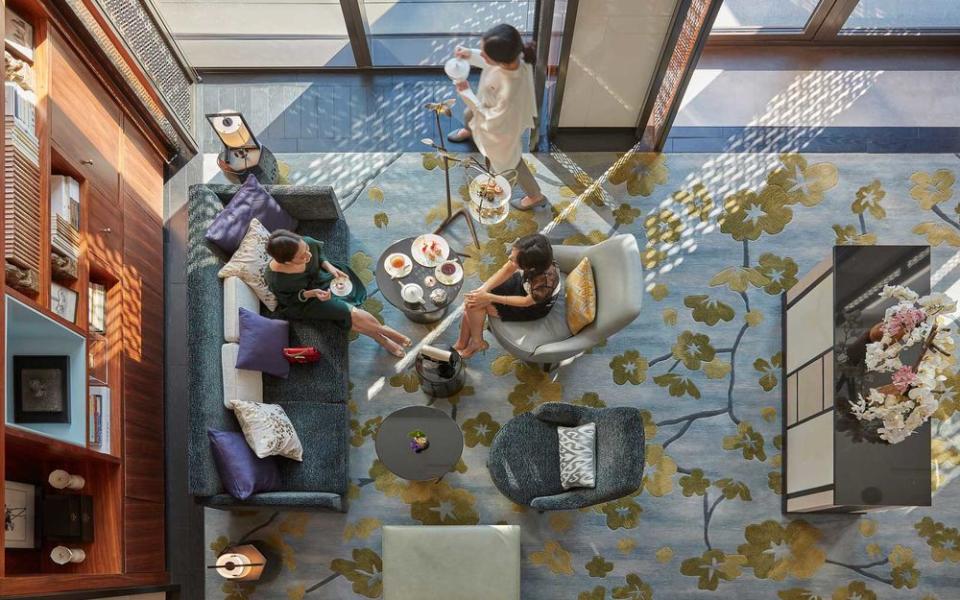
Last September, the largest airport in the world opened in Beijing. After five years of work and an estimated $25 billion, the 7.5 million-square-foot behemoth, designed by starchitect Zaha Hadid, is predicted to greet some 70 million travelers annually. Though you could visit for the airport alone, Beijing has seen a surge of new developments over the past year. The new Mandarin Oriental Wangfujing, opened last March, has a boutique hotel feel, with 73 capacious rooms, yet offers big-time amenities like a state-of-the-art spa, a sleek fitness center with a lap pool, two on-site restaurants, and a library. A short walk away, the Forbidden City, a palace complex in central Beijing, will open the historic Qianlong Garden for the first time ever in 2020. Its stunning interiors have remained mostly unchanged since they were built in imperial China. —Scott Bay
8. Big Island, Hawaii

Despite the eruption of Kīlauea volcano in 2018 and the subsequent tourism downturn, visitors to Hawaii’s largest island were never really in danger — the volcanic activity was limited to its east side, far from the resorts on the Big Island’s western coast. But now that the lava has stopped flowing, there’s new energy in the air. The island’s biggest resort opening in years is set to debut in January 2020 — a reimagining of Mauna Lani by Auberge Resorts, the first Hawaiian venture by the Bay Area-based luxury hotel brand. After a yearlong, $200 million renovation, the property will unveil a redesigned spa that’ll incorporate Hawaiian botanicals grown on-property into its treatments, as well as Canoe House, a beachfront restaurant with a menu full of local items like grilled Kona lobster. Elsewhere, a new wave of artisans is taking hold, like Kona’s Big Island Distillers, which sources ingredients for its spirits — like honey, sweet potatoes, and coffee — directly from the island. —John Wogan
9. Botswana

Take your pick from a slew of new safari lodges. The Okavango Delta just saw the opening of Natural Selection’s Tuludi, a treehouse-inspired camp with seven tented suites connected by elevated boardwalks, and come June, the solar-powered Xigera Safari Lodge will debut in the delta’s Moremi Game Reserve. On the edge of Chobe National Park, you’ll find a new, six-tent mobile camp called Linyanti Expeditions, where travelers take walking safaris through the bush in search of elephants, zebras, and rare birds. Meanwhile Great Plains Selinda Camp, in an area of northern Botswana best known for sightings of the rare African wild dog, has been dazzling guests since its opening last June, with guest rooms that put a fresh spin on the classic safari aesthetic, and exteriors that echo the thatched-roof buildings in the tribal center of the Bayei people. —Madeline Bilis
10. Boston
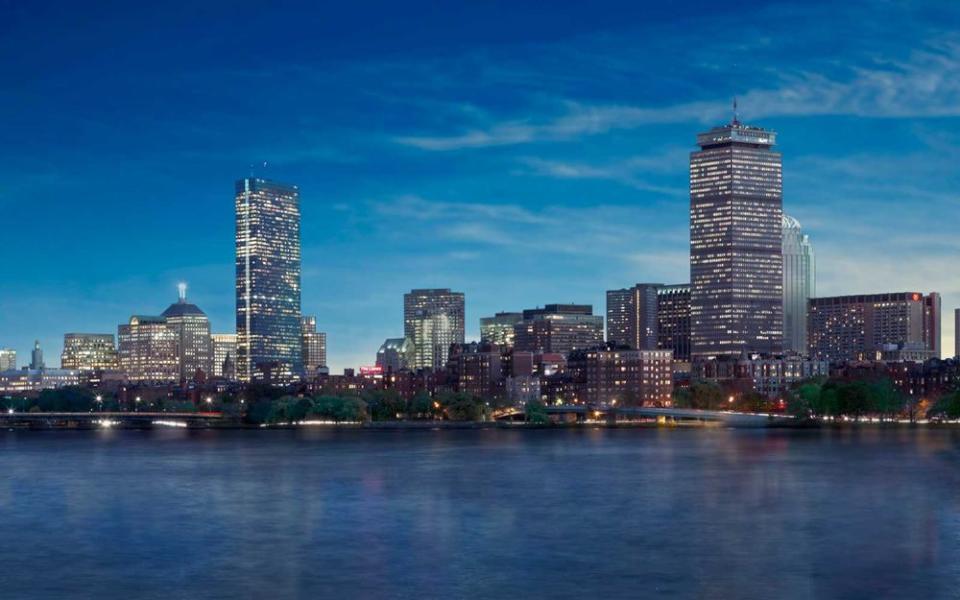
Boston is becoming the country's next great hotel city. Recent months saw two top-shelf debuts: the Four Seasons One Dalton landed in a new 61-story skyscraper offering 215 rooms, a massive spa and indoor pool, and a branch of haute-Japanese eatery Zuma. The Whitney reinvents a 1909 brick building on the Charles River as a 65-room, Federalist-chic boutique hotel; the restaurant’s from the team behind the nationally awarded Juliet. This summer, the Langham emerges from a closure and redo, and early in 2020, the city's former Taj will be rebranded the Newbury. The 90-year-old grand dame will show off contemporary cachet inside classical bones, with interiors by Alexandra Champalimaud, Jeffrey Beers, and Ken Fulk. Beyond hotels, there’s the new permanent installation of one of Yayoi Kusama’s kaleidoscopic Mirror Infinity Rooms at the Institute of Contemporary Art/Boston, and the recent opening of a Time Out Market, bringing together 15 of the city's best eateries. Five more food halls will launch in the next year, giving you the makings of one very satisfying getaway. —Andrew Sessa
11. Brisbane, Australia
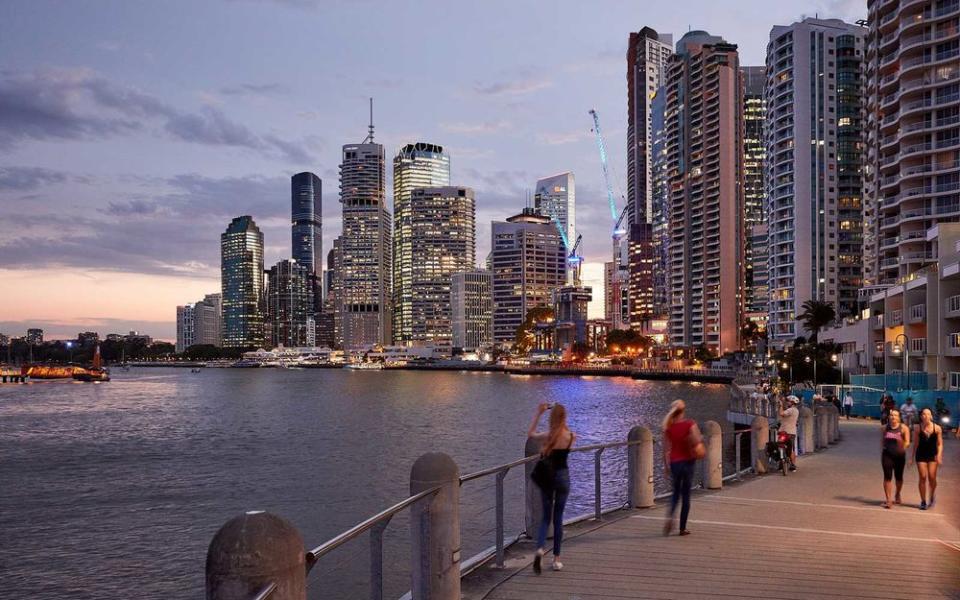
Though the massive Queen’s Wharf revitalization project in the Queensland capital won’t be complete until 2022, headway is already being made in the form of three buzzy waterfront recreation areas. Family-friendly Waterline Park courts outdoor enthusiasts with a climbing wall and other sporting equipment; Mangrove Walk focuses on indigenous culture and local wildlife, with educational signposts stationed throughout the quarter-mile path; and the initial section of a rehabilitated Bicentennial Bikeway features wider lanes, better sight lines, and improved traffic flow. A hotel boom in 2018 and 2019 brought such high-profile openings as the Calile, Ovolo Inchcolm, and Fantauzzo, but a host of five-star properties slated for the Queen’s Wharf — including a Ritz-Carlton and a Rosewood — will elevate the Australian city’s cache even further. —Sarah Bruning
12. Caesarea, Israel

The happy marriage of antiquity and modernity is drawing more visitors to Caesarea, a coastal town and national park in northern Israel on the site of a 2,000-year-old Roman harbor. The new King Herod Visitor’s Center, named for the port’s founding monarch and built in the massive arched vaults that once stood beneath a temple, displays recent archaeological finds, such as colorful mosaics and gold coins recovered from shipwrecks. Admire the ancient harbor from a table at Helena Restaurant — a seaside fine-dining spot that features locally foraged ingredients and Israeli wines — then wander the ruins of bathhouses or explore submerged Roman breakwaters, columns, and cargo along the snorkeling and scuba diving trails at the Old Caesarea Diving Center. Spend the night at the newly renovated Dan Caesarea, a posh midcentury resort built by French banking scion Baron Edmond de Rothschild. —Sara Toth Stub
13. California’s Central Coast

Long considered a necessary interlude on the way to somewhere else, this once-sleepy stretch has become a destination in its own right. Travelers are finally catching on to what locals have known long all along: the Central Coast of California offers quiet beauty, agricultural bounty, and some of the best wines in the state. Coastal enclaves such as Cayucos, which self-identifies as “the last of the California beach towns,” and Pismo Beach, where monarchs flock to eucalyptus groves every winter, still feel refreshingly low-key — despite major updates like Vespera on Ocean, a 124-room resort overlooking the Pacific which opened in October. In the Paso Robles area, young gun winemakers thinking outside the barrel continue to draw a cult following. Stay at the Piccolo, a new urban extension of the Paso Robles Inn, and taste for yourself at the recently opened Tin City, an industrial complex that’s home to 23 small-production wineries. Quaint San Luis Obispo is getting overdue credit thanks to a budding restaurant scene and super chic hotel arrivals: check out the Hotel San Luis Obispo, from the team behind Hotel Healdsburg, and Hotel Cerro, opening soon with a rooftop pool and in-house distillery. Further north, the more rural communities of Cambria and San Simeon retain the same countryside charm that attracted William Randolph Hearst to build his enchanting Hearst Castle, which celebrates its centennial this year. With sand and surf, food and wine, stunning hikes, and historic architecture, now is the time to go before the secret’s out. —Tanvi Chheda
14. Chilean Lakes District

Primed to be the perfect spot for viewing December’s solar eclipse, the Chilean Lakes District is graced with clear skies and out-of-this-world landscapes. Located just north of the more rugged Patagonia region, the Lakes District offers the same stunning views, but with the option for softer adventures. (Think: white-water rafting, mountain biking, fly-fishing, and truly top-notch stargazing.) Take it all in at the andBeyond Vira Vira, a luxury lodge on a 56-acre estate offering a long list of outdoor excursions, plus impressive farm-to-table dining. Or opt for the iconic Hotel Antumalal, once visited by Queen Elizabeth II, which overhauled its culinary program in November. Now, the focus is on local and traditional dishes, like the savory pastel de jaiba, or Chilean blue crab pie. —Scott Bay
15. Costa Rica

Several just-opened eco-retreats are offering more ways to unwind in Costa Rica. Perhaps the most-anticipated is Nayara Tented Camp, a safari-style retreat inside a sloth sanctuary. Adjacent to the famed Nayara Hotel and Nayara Springs resort, the camp debuted in December, and offers 29 family-friendly suites linked by footbridges across the rain forest. Then there’s Kasiiya Papagayo, which opened as an adventure-focused getaway; walkie-talkies and headlamps are distributed at check-in. Its five sustainably built, ocean-facing tents rest on platforms above the local flora, leaving much of the landscape undisturbed. Farther south is Kinkára Luxury Retreat, built on the slopes of the Talamanca mountain range. The wellness resort's 31 glamping tents are centered around a thatched-roof yoga pavilion and a garden. Seriously indulgent bathhouses feature indoor-outdoor rain showers; outside, you can take a dip in the waterfalls and wading pools that dot the property. —Madeline Bilis
16. Doha, Qatar

Doha’s arts and culture scene is giving travelers a reason drop in before the crowds arrive for the 2022 Fifa World Cup. The National Museum of Qatar, by architect Jean Nouvel, opened last year, and adds to the city’s collection of art hubs, like Mathaf: Arab Museum of Modern Art and the Museum of Islamic Art. And thanks to a brand-new underground railway system, it’ll be a breeze to go from Hamad International Airport to the restaurants and galleries along the palm-edged Corniche. The new Mandarin Oriental, Doha and the Al Najada Doha Hotel by Tivoli are among the stylish hotels to arrive on the scene—both are in Old Doha, striking distance from the Souq Waqif, the city’s historic open-air street market. —Siobhan Reid
17. Dominica

This 290-square-mile teardrop is an outdoorsy traveler’s oasis, claiming 365 rivers, 300 miles of hiking trails, a dozen waterfalls, and the world’s second-largest hot spring. And resorts are betting that visitors will find the trek to this “Nature Island” utterly worth it. The game-changer is Cabrits Resort & Spa Kempinksi, which debuted in October and claims to be the first five-star hotel in a destination better known for landscapes than luxury. The resort has 151 rooms and suites; three restaurants; a massive spa, offering mud baths sourced from one of the island’s 10 volcanoes; and a bar called Rumfire, winkingly called a “barmacy,” where you can sample more than 30 “bush rums” — homemade spirits infused with medicinal herbs, spices, or fruit. But it’s not just Kempinski that’s betting on Dominica. Wellness resort Jungle Bay, destroyed when Hurricane Maria careened through the island in 2017, relocated from Délices to Soufrière and reopened last fall. Secret Bay, a clutch of luxury treehouse villas, is also back in business after the storm. And Anichi Resort & Spa, an Autograph Collection project, is scheduled to debut on Picard Beach later this year. —Sarah Greaves-Gabbadon
18. The Douro River
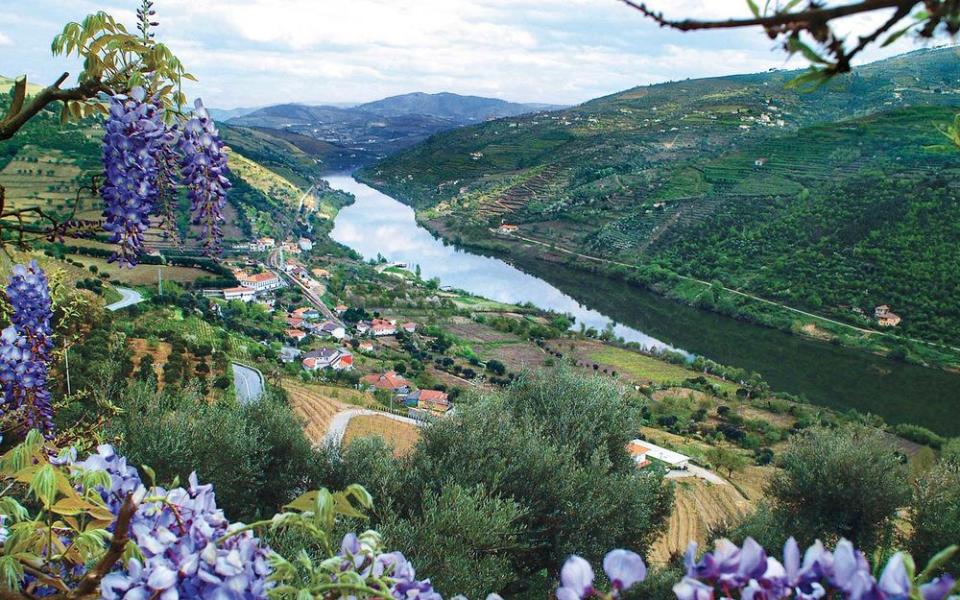
Portugal remains a popular getaway — and in 2020, it’s all about experiencing it from the water. Last spring, Viking River Cruises christened the Viking Helgrim, a vessel built for its new Douro itinerary. A few weeks later, AmaWaterways debuted the AmaDouro, which sails between Porto and Vega de Terrón in Spain. This year, Tauck will launch the 84-passenger Andorinha, and Uniworld Boutique River Cruise Collection will christen the S.S. Saõ Gabriel, which has décor that channels the ambience of the Douro Valley. On land, wineries like Quinta do Portal and Quinta do Seixo serve light reds, vinho verde, and the ubiquitous port. Stay in Porto at recent additions like the Art Deco stunner Le Monumental Palace or the art-filled Torel 1884, whose 12 rooms and 11 standalone apartments feature art inspired by fabrics, materials, and spices from faraway lands. —Hannah Walhout
19. Dubai

Expo 2020 Dubai, the first World Expo to be held in the Middle East, is set to change the face of a city whose face is always, already, constantly in flux. About halfway between Dubai and Abu Dhabi, the 1,000-acre “District 2020” will eventually have multiple parks, a dedicated metro station, and more than 200 restaurants and food venues. (After the expo wraps, the government plans to turn the site into a LEED Gold certified tech and education hub.) The country’s fraught record on labor issues has brought heightened scrutiny to the endeavor, but a whopping 192 countries have signed on to join in the festivities, including Iran, Israel, and Qatar, three nations with whom the U.A.E. has had strained diplomatic relationships. The program will feature 60 live shows every day, including “Al Wasl,” the first Emirati opera, scored by American composer Mohammed Fairouz with a libretto by Emirati writer Maha Gargash. And for the first time ever, each and every nation, from China to Djibouti, will have its own pavilion. During its run, which begins in October, the city expects to receive around 25 million visitors. It’s not often we get to publish the words “an event the likes of which the world has never seen” — but in this case, whatever you think of the whole expo enterprise, it certainly applies. —Hannah Walhout
20. Durban, South Africa

Despite a thriving food scene and tropical beaches, Durban has always lurked in the shadows of Cape Town and Johannesburg. But with the unveiling of Durban’s new seaside promenade, part of a $2.5 billion development designed to rejuvenate the waterfront area, the city is becoming South Africa’s next cultural and coastal getaway to watch. Dubbed the ‘Golden Mile’, the shiny 3.7 mile strip, which is an ongoing development over the next 15 years, will flaunt glistening buildings with apartments, shops, a hotel, and public hangout spaces, plus a hotly anticipated new cruise terminal, which began construction in late 2019 and is set to open in 2021. Beyond the shiny waterfront, the city’s food scene, which is rooted in South Asian cuisine due to the substantial Indian community, thrives. Street food dishes are a must: look for bunny chow (a hollowed out bread loaf filled with curry) at CaneCutters and lemony pieces of chicken and slap chips (fries doused in vinegar) from Afro’s Chicken. Another key stop: A trip to the newly relocated African Art Centre for clay pots and beaded baskets. —Mary Holland
21. Guyana
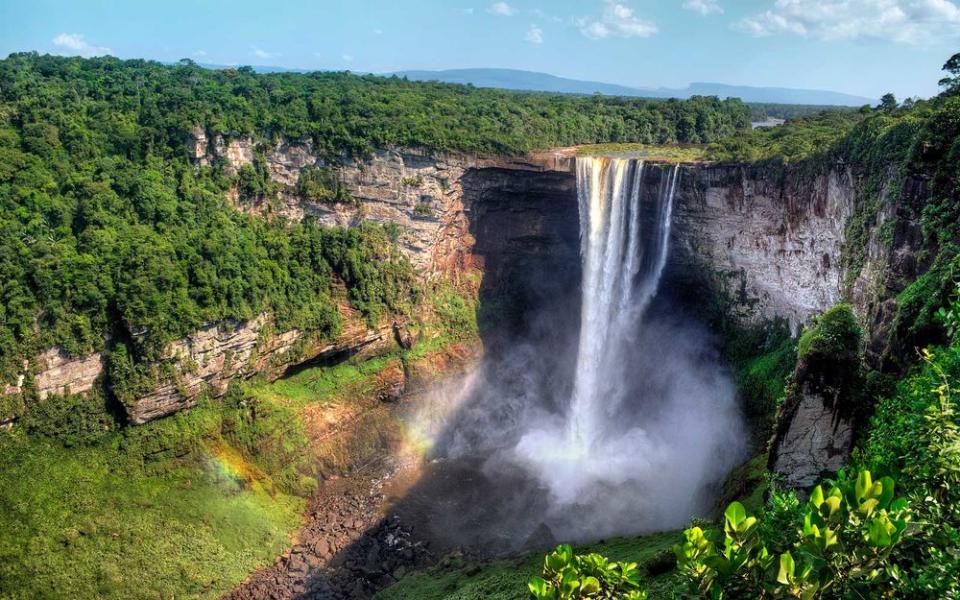
Guyana is known as the land of giants — giant river otters, giant anteaters, giant water lilies, and one of the tallest waterfalls in the world, Kaieteur Falls. And the South American nation is soon to loom large for travelers: Visits were up 10 percent in 2019 from the already-record highs of 2018, and new direct flights on American and JetBlue and global industry accolades for ecotourism promise still more growth in 2020. (It doesn’t hurt that it’s the continent’s only English-speaking country.) Guyana’s unique offerings recall the Costa Rica of 40 years ago: nighttime ride-alongs with naturalists who are trapping and tagging wild caimans; horseback rides on the savannah in search of anteaters; stays at indigenous-owned eco-lodges in picturesque mountain villages. Over 75 percent of the country is rain forest and about seven percent is savannah, which means there’s plenty of opportunity to catch a glimpse of one of the 900 animal species that make it their home. — Judy Koutsky
22. The Great Lakes

The next hot cruise destination is…The Great Lakes? Believe it. The five lakes collectively offer 11,000 miles of attraction-packed shoreline, and new small ship cruises are making it easier to explore. Luxury French cruise line Ponant launched a Québec-to-Milwaukee itinerary for the first time in 2019 (book now for the next sailing in 2021), and Blount Small Ship Adventures just added a two-week Great Lakes trip to its roster, taking visitors from Chicago to Montréal. There’s boatloads to discover on the ground, too. Michigan’s Mackinac Island, a perennial (and famously unchanging) traveler favorite, got two new hotels in 2019, the Mackinac House and Waterfront Collection, and the historic Grand Hotel added new rooms and suites. On the UP, Chicago chef Iliana Regan and her wife, sommelier Anna Regan, launched the remarkable Milkweed Inn, an intimate converted hunting lodge and glamping destination where the Regans serve exquisite meals all weekend long, capped off by a multi-course Saturday night tasting menu. And lakeside cities like Cleveland and Milwaukee are drawing new crowds, the former for a thriving creative scene and revived waterfront, the latter for its dynamic restaurant landscape, new museums, and anticipatory buzz ahead of July’s Democratic National Convention. — Emma Balter
23. Istanbul
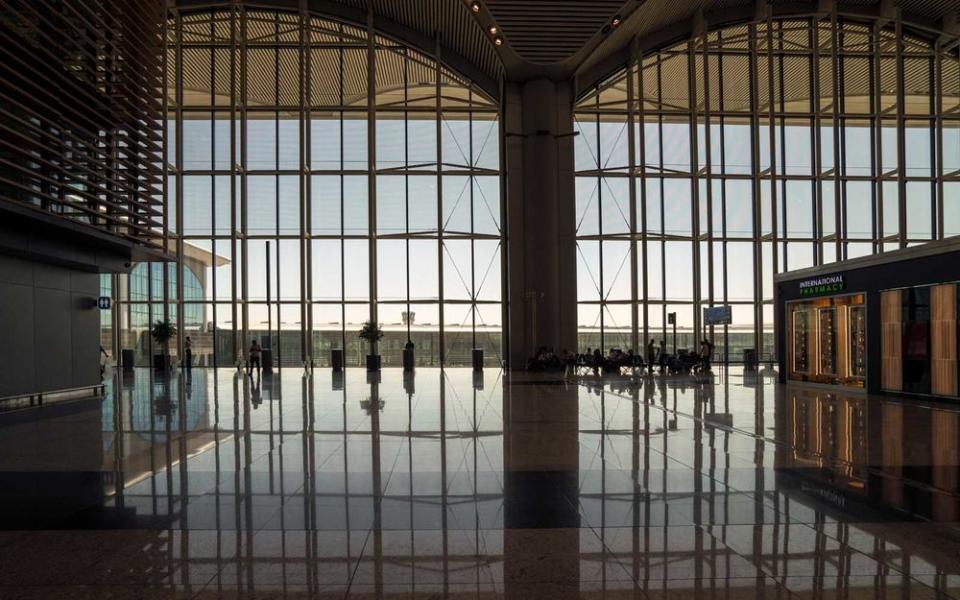
In 2019, the opening of the monstrous Istanbul New Airport — now the world's biggest — brought Istanbul back into travelers' field of vision.This year, cultural openings have the city abuzz. Arter is putting Istanbul back on the map as an art capital: The angular mosaic-wrapped building houses the city's — and country's — first permanent collection of contemporary art, showcasing more than a thousand works by Turkish and global artists throughout six floors and terraces. After a few years of slow growth, Istanbul's hotel game is heating up again, particularly with the impending christening of the new Six Senses Kocatas. An hour-long ferry ride up the Bosphorus, in a quiet seaside district, the luxury hotel brand transformed a pair of opulent Ottoman-era mansions into a boutique hotel unlike any other. Add to that the city's newest hammam, the intimate Curkurcuma Hamami — a gleaming 19th century white marble bath that was painstakingly renovated for 11 years — which isn't in overcrowded Sultanahmet, but tucked away on the charming cobblestone streets of Çukurcuma. To top it off, the long-in-the-works Galataport cruise terminal is set to open this spring. Despite all the flashy openings, you can still visit old favorites like the Hagia Sophia Museum, Topkapi Palace, and Ciragan Palace Kempinski, because Istanbul is a city that has all but mastered the precarious art of commingling traditional with contemporary. —Jenna Scatena
24. Jalisco, Mexico
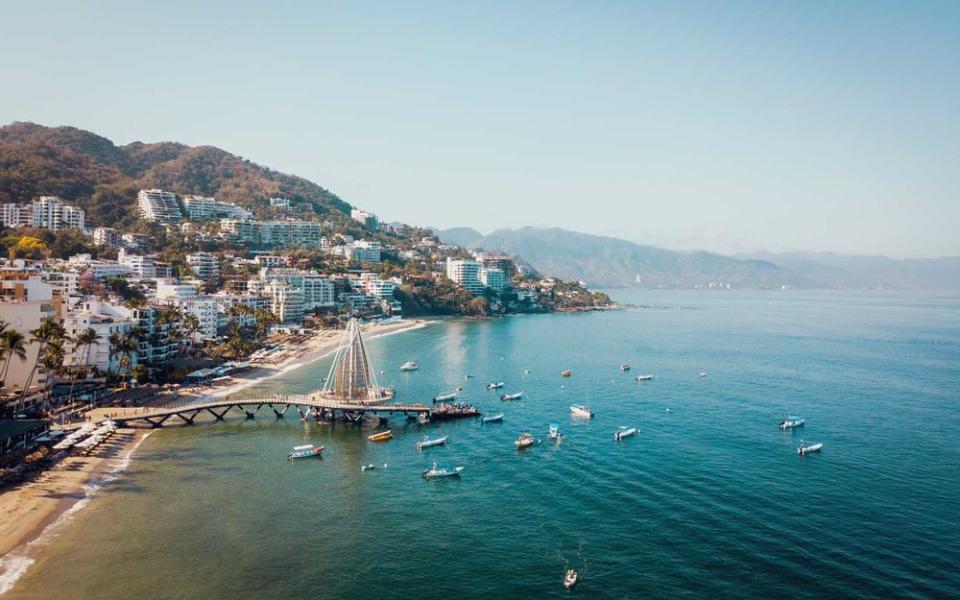
Mexico City has been the recent travelers’ darling, but it doesn’t have a national monopoly on boutique hotels, innovative fine dining, or cultural riches. In the state of Jalisco, tradition and modernity mingle in fantastic fashion — and the region has never been more accessible. In Puerto Vallarta, the 55-room Hotel Amapa, coming this spring, is a boho-chic boutique alternative to the town’s many all-inclusives. On the Costalegre — the stretch of shore between Cabo Corrientes and Jalisco’s southern border — the 160-room Four Seasons Resort Tamarindo will open in 2021. Meanwhile, infrastructure investments are making the region easier to navigate. Highway expansions will soon trim the drive between Guadalajara and Puerto Vallarta from five hours to three, and the trip from Puerto Vallarta to the Costalegre from three hours to an hour and a half. And the Costalegre’s own international airport will open this year, making it even easier to sample all of Jalisco’s wonders in a single trip. —Carey Jones
25. Klitmøller, Denmark

Surfing in Denmark? It’s legit! Consistent breaks and large swells — ideal conditions for both beginners and pro surfers — earned the town of Klitmøller, on the edge of the North Sea, the nickname “Cold Hawaii.” Cold Hawaii Surf Camp is the place to go for lessons and rental gear; further inland, the sandy dunes and glimmering lakes of Thy National Park are ideal for hiking. Just under an hour’s drive away is the region’s choicest stay: the new Svinkløv Badehotel. After a devastating fire destroyed the original 90-year-old hotel in 2016, Danish chef Kenneth Toft-Hansen spent nearly three years bringing the much-loved property back to life. The barn-like wooden building houses 36 white slatted rooms with raffia rugs, floral curtains, and windows that overlook the wind-beaten dunes and ocean. In the sunny restaurant, Toft-Hansen, a recent Bocuse D’Or winner, serves approachable yet inventive dishes like steamed cod with a crispy pimento crumble and no-fuss fishcakes with fries. — Mary Holland
26. Kuala Lumpur, Malaysia
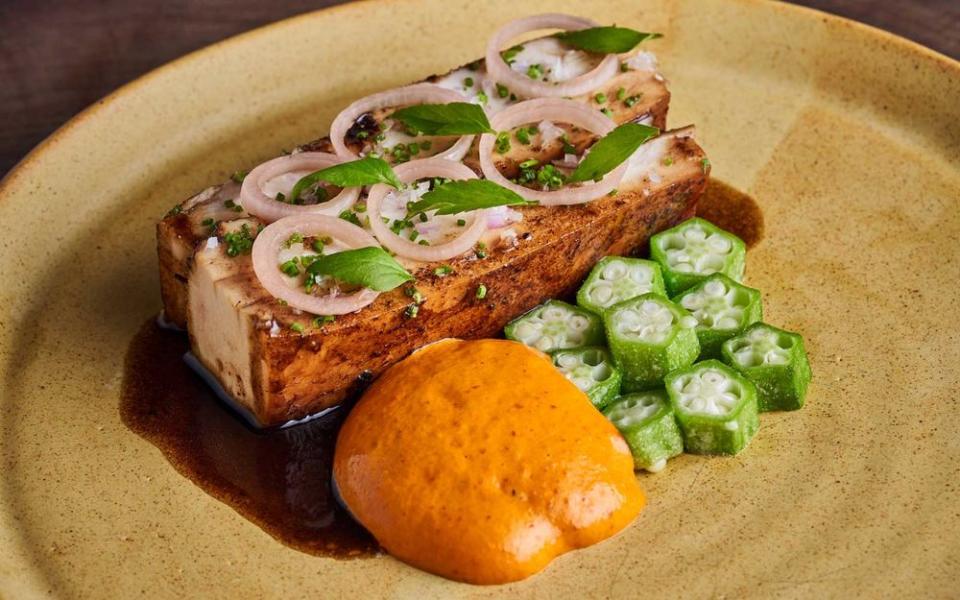
Travel to Malaysia, and you’re likely to be headed to its alluring beaches or the historic Straits cities of Penang and Melaka. But a recent explosion of chic hotels and restaurants has put Kuala Lumpur in the spotlight. These days, the menu at the swank open-air pool lounge of the RuMa Hotel & Residences includes the rum- and Campari-based tiki-bar staple, a Jungle Bird — here, the glass comes presented in a stylized metal birdcage. Just five years ago, nothing like that existed in KL — nothing like that cocktail; not a single hotel of RuMa’s caliber. Opened in late 2018, it brings a boutique’s design sensibility (take note of the showstopping twin spiral staircases in the lobby) and sense of intimacy to a 253-room hotel. Bona fide boutique properties have landed here, too: the Chow Kit opened last fall with spaces by Studio Tack, the Brooklyn-based design firm behind a number of chic stateside properties, such as Scribner’s Catskill Lodge in New York and the Anvil Hotel in Wyoming. Major players have taken notice, too: Four Seasons and W landed in 2018, with Conrad and Kempinski following in 2021. Malaysian cuisine, with its mix of Chinese, Indian, and Malay influences, is among the world’s greats — and these days, it’s finally showing up in the capital’s high-end restaurants. The RuMa’s sleek ATAS, hipster-magnet ChoCha Foodstore, and the extraordinary OpenHouse, at the base of the Petronas Twin Towers, each offer a different angle on modern Malay cuisine, taking exciting liberties with local ingredients. — Carey Jones
27. Kyoto, Japan
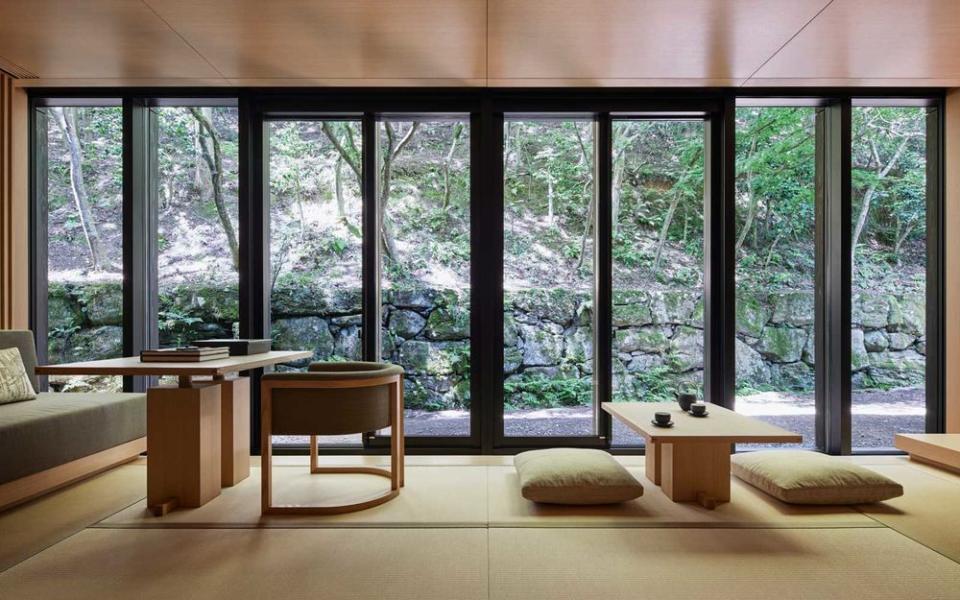
As visits to Kyoto continue to climb, a trend that will only intensify when the Olympics come to Japan this summer, innovative hotels and museums are opening. The Fukuda Art Museum, which focuses largely on Kyoto artists from the Edo period to today, debuted in October, and the Kyocera Museum of Art is slated to reopen this March after a three-year expansion that added contemporary art galleries to supplement the existing 1933 building. The Park Hyatt Kyoto, a hillside retreat that launched last fall, echoes Kyoto’s imperial history and its time-honored aesthetics, including those of the ryokan. The Kengo Kuma–designed Ace Hotel, opening this spring, is inspired by the restored machiya shop-houses that have played a large role in Kyoto’s self-renewal. But the most notable arrival is no doubt that of the new Aman Kyoto. Far from the anonymous urban grids of central Kyoto and the manicured tourist neighborhoods of Gion and Higashiyama, the property sits in a small valley surrounded by forested foothills in the northeastern suburbs. The Aman’s guest pavilions, all minimalist in style and largely made of cedar, are set along a mountain stream. The surrounding garden is landscaped with monumental stone walls and pathways. The onsen is outdoors, surrounded by ornamental boulders, and the guest rooms overlook trees glittering with fireflies; the ofuro tubs in the bathrooms are made of aromatic cypress. The whole effect is one of simplicity and understatement. —Lawrence Osborne
28. Lille, France
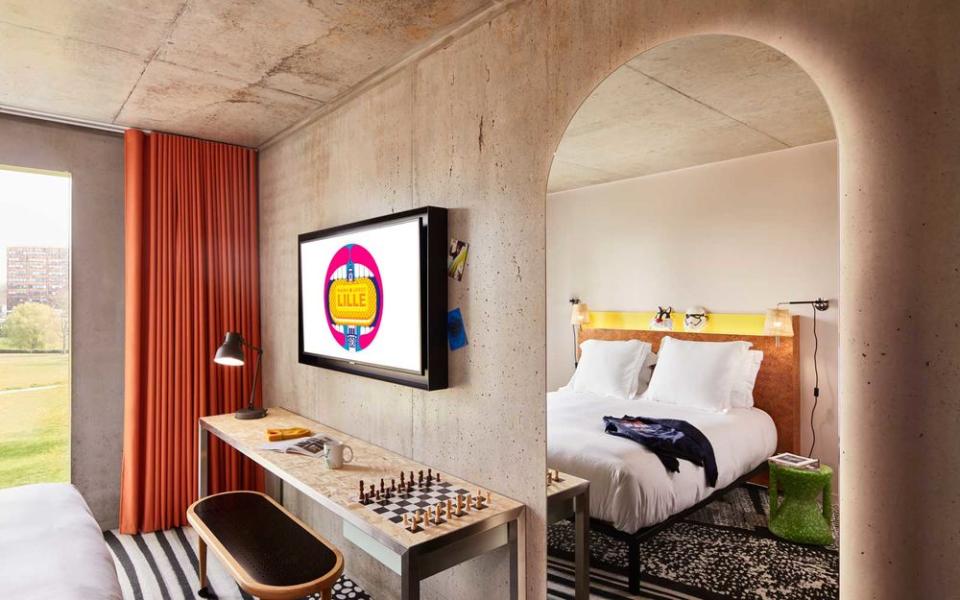
Crowned as the World Capital of Design 2020 for its advances in urban development, the once-struggling industrial city of Lille is on its way to enjoying optimized public spaces thanks to a slew of sustainable design initiatives. It’s also quickly becoming a cosmopolitan oasis with new galleries, museums, restaurants, and boutiques. Among the new art-forward destinations is La Piscine, an Art Deco indoor swimming pool turned art museum that just reopened after a two-year renovation. The bohemian-chic brand Mama Shelter also debuted a hotel in the city center last summer — its rooms offer sweeping views of the skyline. And jaw-dropping restaurants like Coke, a brasserie and hotel serving French classics beneath ornate moldings and crystal chandeliers, and La Belezza, a new Italian spot from the owners of Big Mamma in Paris, are marrying old Lillois style with contemporary flair. —Sarah Souli
29. Maine

With the navy seas beyond Deer Isle as a backdrop, you can marvel at breakfast at Aragosta at Goose Cove, where chef Devin Finigan sources everything locally, from the blueberries in her pancakes right down to the salt, harvested from the briny waters outside. It was a sign of the changes afoot in Midcoast and Down East, where ambitious hoteliers and chefs are ushering in a new, sophisticated era. Finigan is among those leading the charge. She opened Aragosta at Goose Cove last June, with 11 understated, Scandi-style cottages and suites that let the landscape shine. In nearby Stonington, chef Ryan McCaskey, of Chicago’s much-lauded Acadia, recently opened Acadia House Provisions, where he serves scallops with butter-braised radishes and the plumpest mussels you’ll ever taste. Farther inland is Tops’l Farm, a glamping retreat in Waldoboro that counts 11 tents and A-frame cabins decked out with sheepskin rugs and hurricane lamps. At check-in, guests receive a guide on how to relax and unplug, plus a menu of campfire kits that come with house-made marshmallows. And the fresh-aired lodgings don’t end there: come summer, Terramor Outdoor Resort Bar Harbor will open with luxe tents and a modern, glass-walled lodge. —Madeline Bilis
30. Malawi

Wedged between the safari superstars of Zambia and Tanzania, Malawi, a sliver of a country, has had a hard time establishing itself as worthy wildlife hotspot. But two decades of conservation efforts are paying off across the country’s wild places. Now, after years of repopulating the major Liwonde National Park, which has a tragic history of poaching, 2020 will be the first year that visitors can anticipate seeing the Big Five. Following a large elephant relocation in 2016, there’s been a steady increase in the population, and the park is finally home to a number of healthy herds. Lions and cheetahs, too, are back, and in November 2019, 17 black rhinos were relocated to Liwonde from South Africa to encourage population growth. Travelers can enjoy luxury accommodation offerings, like Robin Pope Safaris’ low-key Kuthengo Camp on the Shire River in Liwonde, which opened in 2018. And even established spots are ever-evolving: In 2020, Mvuu Lodge, a classic property in Liwonde, will open a collection of star beds, where guests can slumber under the night sky. On the shores of glimmering Lake Malawi, one of the country’s other major draws thanks to its swimmable water, the unfussy Chinchetche Inn recently expanded with four new rooms that roll onto the lake. — Mary Holland
31. Maldonado Department, Uruguay
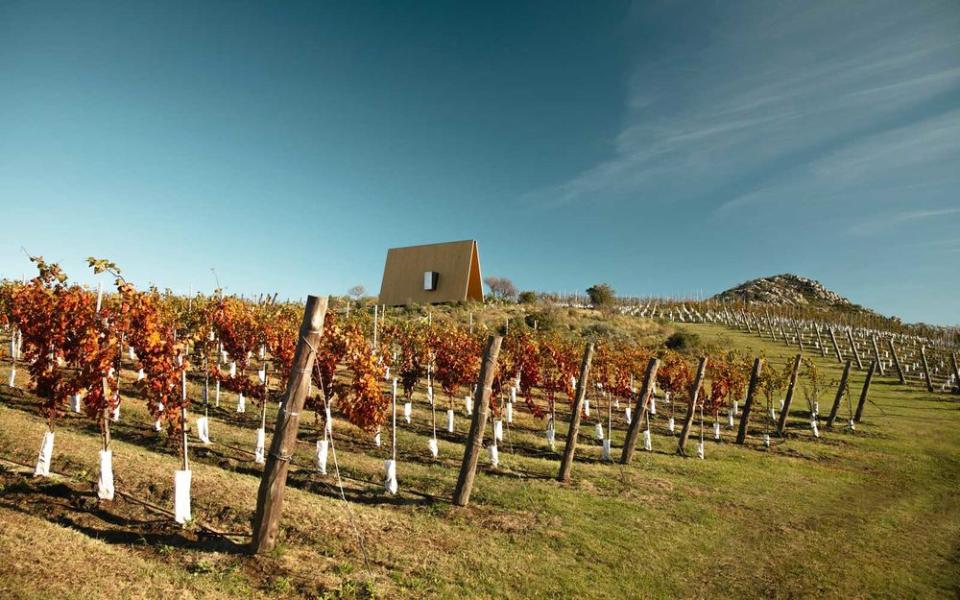
The playground of South America’s elite is catching on stateside. The buzz began picking up with the arrival of Sacromonte Landscape Hotel, a high-design vineyard retreat with 12 mirrored cabins. Now, creatives are flocking to Campo, a new artistic community where an on-site gallery, café, and food lab, Canteen, opened just weeks ago. Nearby, Garzón Sculpture Park, a nearly 400-acre parcel that’s part outdoor museum, part nature preserve, will host its first exhibition in December 2020, featuring site-specific works by African artists created in partnership with NIROX Sculpture Park in South Africa. And in José Ignacio, Bahia Vik just added new bungalows and a spa. Still to come: the Museum of Latin American Art, slated to open near Punta del Este in 2021. —Siobhan Reid
32. Manchester, U.K.

Once famed for its towering industry and more recently, vibrant music scene, Manchester is now one of the fastest growing cities in Europe, buoyed by an influx of digital and media companies. Servicing this boom are a number of upscale and design-led arrivals.The new Cultureplex, an ex-railway goods warehouse in the northern quarter, offers up a restaurant, bar, and café, alongside a constantly revolving program of film, visual arts, and performances. Opening this spring, Hotel Brooklyn, inspired by the New York City borough from which it gets its name, is housed in a Victorian brownstone. The team behind Chiltern Firehouse recently unveiled Native Manchester, a new multi-use 166-apartment hotel in the northern quarter. Meanwhile, chef du jour Tom Kerridge has opened an outpost in the new Stock Exchange hotel, a 40-room Relais & Chateaux property in a storied Edwardian Baroque building. Kerridge’s Bull & Bear restaurant serves smartly prepared British classics, such as crispy pig’s head with celeriac rémoulade. Epicureans are also flocking to Mana, which recently won the city’s first-ever Michelin star. The Nordic-leaning restaurant’s highlight is a 12- to 16-course tasting menu featuring morsels such as barbecued duck broth and lavender or yakitori-style eel with roasted yeast and blueberry. —Jemima Sissons
33. New Brunswick, Canada

New Brunswick’s Acadian population suffered a massive blow in 1755, when more than 14,000 members of North America’s oldest French-speaking community were forcibly expelled from Canada’s Maritime region. Today, Acadians living in New Brunswick — the only officially bilingual province in Canada — are driving tourism by raising awareness of their history and traditions. At Origines, a seaside restaurant overlooking the Gulf of St. Lawrence, Campbellton-raised chef Benjamin Cormier creates five-course, Acadian-inspired tasting menus that use local ingredients like seaweed and oyster mushrooms. In Moncton, Black Rabbit is a pop-up turned fine dining restaurant that serves traditional Acadian comfort food like râpure, a casserole made from grated potato, onion, and chicken. Learn to make some of these recipes at the Village Historique Acadien, a living museum comprising more than 40 restored buildings, including a tavern and a school. Or head to the family owned Distillerie Fils du Roy to try an absinthe called Courailleuse that’s made using techniques from the 1850s (don’t leave without also sipping Gin Thuya, which has won gold medal at the San Francisco World Spirits Competition). At the year-old Cielo Glamping Maritime, travelers sleep in fully insulated geodesic domes, each equipped with a private patio and a wood-fired hot tub. In the warmer months, the property can organize paddle boarding excursions on the bay to forage for oysters. —Siobhan Reid
34. North Island, New Zealand

New Zealand’s upper isle is a study in delightful contrasts: it’s smaller than its southern counterpart, yet more populous, and the scenery varies widely, from geothermal geysers to mud pools to white-sand beaches. The rugged South Island has long been the traveler’s go-to for its mix of adventure and wine, but in 2020, intriguing new developments should draw them north. The Landing — a four-villa property staffed entirely by Kiwis and already a draw for its pristine private beaches and walking trails — will open its own winery and tasting room in April to immerse guests more fully in its award-winning vineyard. And come November, the secluded, ultramodern Owhaoko will open in the Kaimanawa and Kaweka Forests for adventurers willing to fly in by helicopter. Until then, head to Tongariro National Park, a UNESCO World Heritage site, where the new Sky Waka gondola, the largest of its kind in the country, takes visitors into the clouds of Mt. Ruapehu. —Sarah Bruning
35. North Macedonia
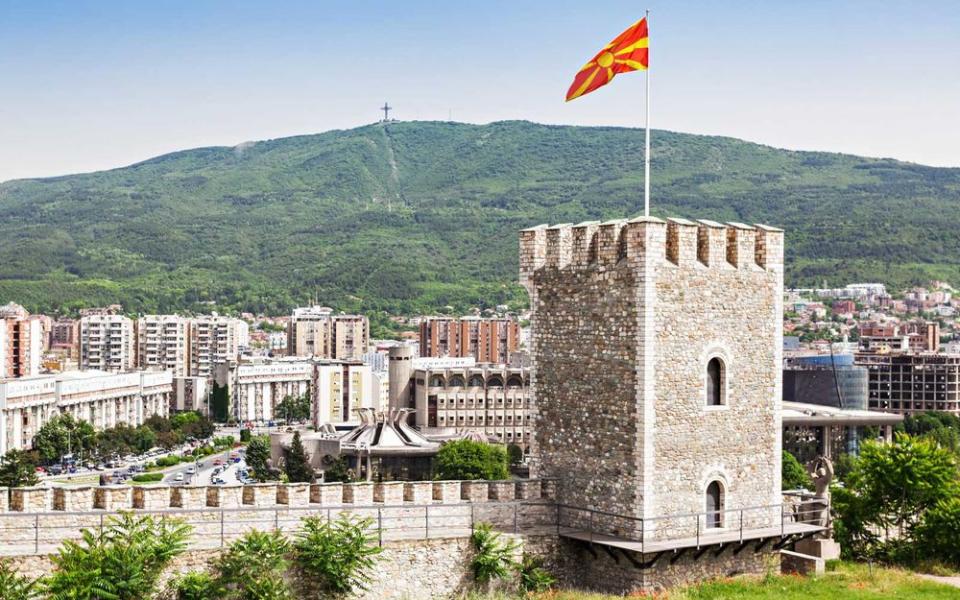
Refreshingly free of big-box chains and tourists (fewer than 1.5 million visitors were recorded in 2018), the Republic of North Macedonia won’t fly under the radar for much longer. The newly renamed country has a wealth of historic sights, like the Kale (or fortress) in the capital, Skopje; Kokino, a megalithic observatory; and the ancient city of Heraclea Lyncestis, on the outskirts of Bitola. In Ohrid, the new Sky Corner Hotel will add more rooms and a restaurant later in 2020. Record enthusiasts will relish the Skopje Vinyl Convention, where there will be concerts, workshops, and the chance to add some rare discs to your collection. And in June, Bitola will host the Slow Food festival Terra Madre Balkans. Held in rotating European countries, the biannual event brings in chefs and experts to celebrate the movement with regional cooking and round table discussions. —Courtney Lichterman
36. Oklahoma City

Oklahoma City is officially hitting its stride as an arts and culture destination. Last fall, local arts collective Factory Obscura debuted Mix-Tape, a permanent, immersive installation that personifies the feelings that go into creating musical compilations for friends. Meanwhile, March will see the opening of the Oklahoma Contemporary Arts Center, a brand-new expansive campus with galleries, performance spaces, classrooms, studios, and a café. It’s not far from the city’s just-opened Scissortail Park, a 70-acre green space that stretches from downtown to the banks of the Oklahoma River. The park is part of an ongoing effort to boost the quality of life in Oklahoma City — as are downtown’s newly installed streetcar lines. Six miles of tracks now connect central attractions. And next year, the city’s new convention center and Omni hotel will be complete, rounding out a revitalized downtown. —Madeline Bilis
37. Paros, Greece

Paros is a place overtourism forgot. The rugged Greek island, located smack in the middle of the Cyclades, can only be described as the cooler cousin of more populated islands like Mykonos and Santorini. Part of what makes it so cool: The newly opened Parilio, a 33-suite high-design hotel that rises from the landscape. A neutral palette graces its interior and exterior, while traditional building techniques elevate the Cyclades’ classic cubic houses. The island is home to those white-washed and blue-roofed buildings Greece is famous for, too, but with far less travelers elbowing you for the perfect Instagram. It’s worth navigating the labyrinthine streets in the town of Naoussa to spot some picturesque alleys, and booking a table at the much-loved Sousouro for a colorful breakfast spread. —Stacey Leasca
38. Quito, Ecuador
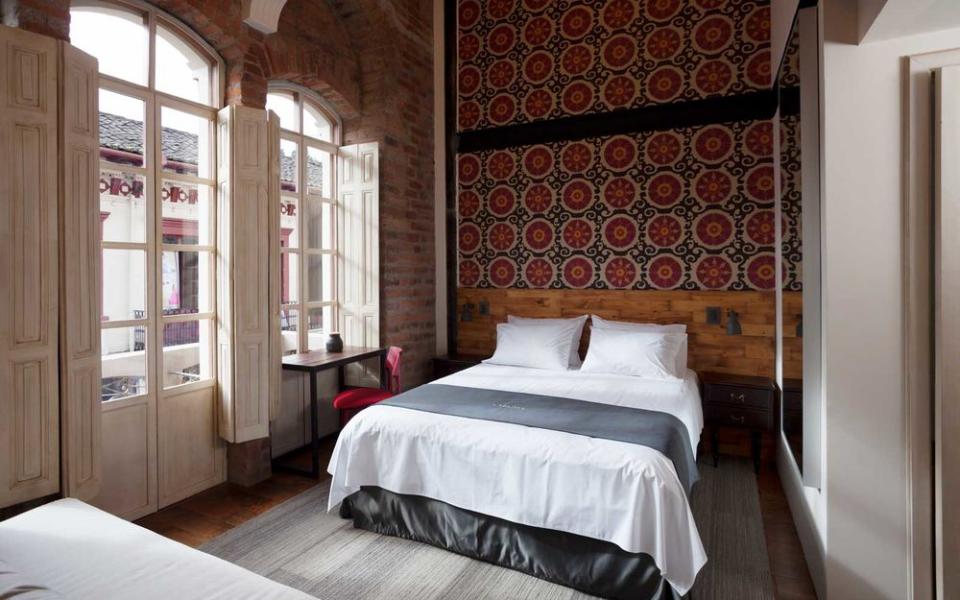
High in the Andes, the Ecuadorean capital, with its unwieldy urban sprawl and car-centric downtown, has never quite held the allure of Rio or Lima when wanderlust strikes. The city’s been making real strides to address that: Several years ago, Quito moved its airport from the city center to its fringes in an effort to make landings less treacherous and satisfy noise-addled locals, and work is underway to transform the former terminal into a public park. Now, the long-awaited 2020 opening of Quito’s first-ever underground railway line, running 14 miles north-south, promises to truly transform Ecuador’s mountain city, putting once-inaccessible neighborhoods within reach and bringing locals downtown. The city’s skyline is changing, as the likes of Moishe Safdie and Jean Nouvel are enlisted for major new buildings in town. And after last year’s protests caused damage in the area, a community restoration effort has brought the Spanish Colonial Centro Historico back to its former glory. Check into the 12-room Carlota Hotel, and don’t miss a meal at Nuema, the much-lauded Ecuadorian restaurant that moved to a new space in San Marcos last year. —Lila Harron Battis
39. Rajasthan, India
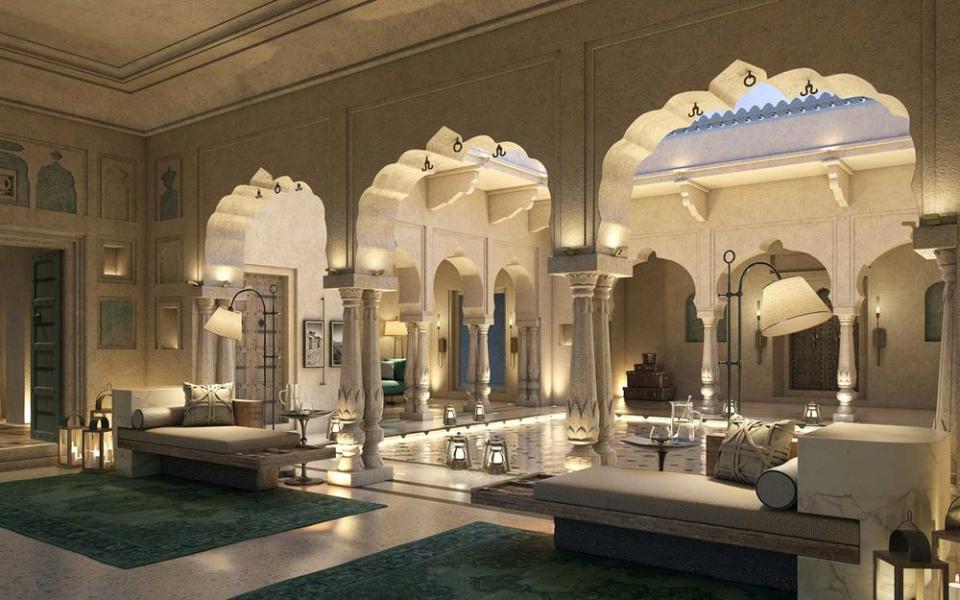
The colors, creative traditions, and opulent palaces of Rajasthan are what many of us picture when we think of India — but this coming year, even those who think they’ve been there and done that should plan a return trip. Fall will see the launch of Six Senses’ first India property, the 48-suite Fort Barwara, which is set in a 14th-century fortress south of Jaipur. In nearby Udaipur, the Raffles group is also due to make its Indian debut later in 2020. Set on a private island in Udai Sagar Lake, the palatial hotel will have a rooftop restaurant, an outdoor pool with gardens, and a capacious spa. Just outside the city, India’s first sculpture park opened at Madhavendra Palace, displaying the work of heavy-hitting Indian artists like Subodh Gupta and Mrinalini Mukherjee in a dramatic fortress setting. And in downtown Jaipur, the recently opened Amrapali Museum Jaipur showcases some of the 4,000-plus Indian gems collected by the founders of the Amrapali jewelry brand. —Flora Stubbs
40. Rome's EUR District

EUR, which stands for Esposizione Universale Roma, has long been one of Rome's most curious neighborhoods. Built in the late 1930s by Mussolini for a World’s Fair that never happened, the neighborhood’s bizarre fascist-neoclassical buildings and monuments have starred in many masterpieces of Italian cinema. It's a must-visit for architecture buffs and those who want to see another side of the city — and in 2020, it's more important than ever to keep the dark history of fascism in Europe fresh in our minds. Lately, EUR has undergone significant redevelopment, with corporate headquarters like Fendi moving in, as well as the addition of a boundary-pushing new convention center called “The Cloud.” Designed by Studio Fuksas, the it’s brought a revitalized food and shopping scene along with it. And soon, there will finally be an upscale hotel suitable for business travelers and leisure tourists alike: the Hilton Rome EUR, which will open in a striking skyscraper called La Lama, or “the blade.” —Hannah Walhout
41. Rijeka, Croatia

With amazing views of the Adriatic coast, blockbuster beaches, and a colorful Baroque heart — not to mention one of the world’s biggest Carnival celebrations — it’s a wonder that Rijeka isn’t better known. But despite ticking pretty much every conceivable vacation box (toss in world-class museums, a bevy of top restaurants, and cinematic hikes in the surrounding mountains), it remains an under-the-radar Adriatic treasure. That’s all set to change in 2020, when Croatia’s third city is honored as a European Capital of Culture. Plenty is planned within the port town to mark the occasion: more than 1,000 official musical performances, literary events, art exhibitions, and parties; the multimillion dollar overhaul of the historic Sugar Refinery building into the Rijeka City Museum; and the addition of Hilton’s new five-star resort, the Costabella, in April. But perhaps most anticipated is the reopening of the ship Galeb (“Seagull”). Used as Tito’s personal mobile home while he was President of Yugoslavia, the yacht — where countless global leaders and celebrities were entertained — is being refurbished and transformed into a museum ahead of Rijeka’s moment in the global spotlight. —Jonathan Thompson
42. Rwanda
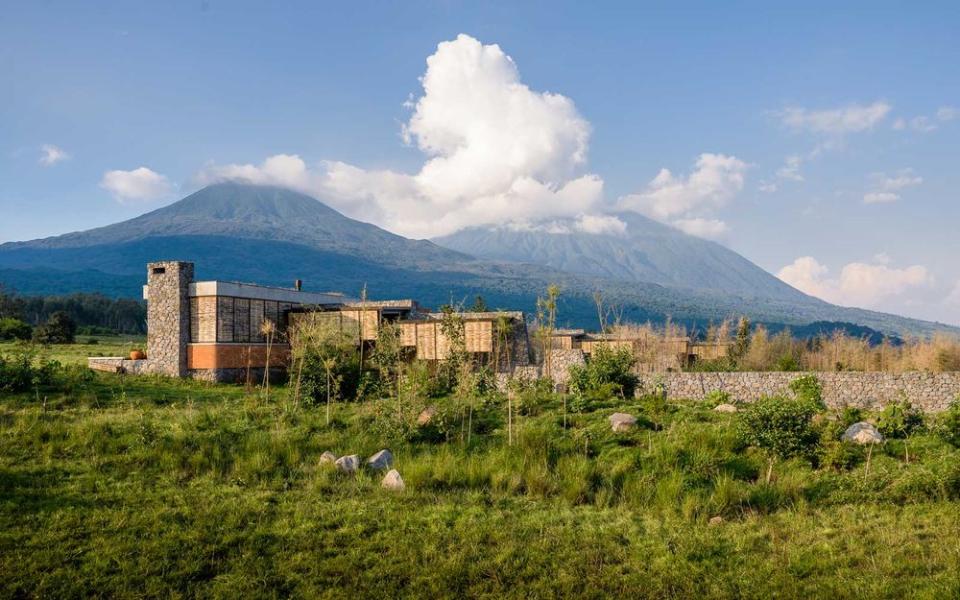
Safari goers take note: new lodges are springing up in the Land of a Thousand Hills. November saw the opening of One&Only Gorilla’s Nest. Set in a jungle sanctuary of eucalyptus trees at the base of the Virunga Volcano Range, the lodge gives travelers the chance to get up close and personal with gorillas in their natural habitat. Singita Kwitonda Lodge in Volcanoes National Park opened a few months earlier, in August — the high-design property offers eight suites and a private villa for rent. Before game drives and gorilla treks, visitors meet in the property’s conservation room, where a selection of maps, books, photos, iMacs, and TV screens teach guests about the region’s endangered mountain gorillas. Beyond guide-led tours, you’ll want to head to Akagera National Park to spot zebras, giraffes, hippos, and, if you’re lucky, elephant or rhino. Plus, Rwanda’s abundant forests, lakes, and volcanoes make the landscape a perfect backdrop for a trip filled with wildlife viewing. —Elizabeth Rhodes
43. Singapore

Each year, there are just a handful of hotel openings that the travel-obsessed world awaits with bated breath. In 2019, all eyes were on Singapore, where the historic Raffles Singapore finally reopened in August after a two-year restoration. Now, the 133-year-old grande dame is a destination once more. In its new iteration, the property retains classic details — parquetry, mullioned French doors, the dramatic black-stained beams and banisters of the Grand Lobby — but has a fresh, bright look. At Changi Airport, meanwhile, the new glass-enclosed Jewel complex makes a long layover a pleasure, with nearly 300 shops, a movie theater, and a hotel. It has the feel of an enormous botanical garden, thanks to lush plantings and a towering central waterfall. Later in 2020, the city-state will also roll out new green spaces, overhauled railway stations, and pedestrian corridors linking parks and gardens. —Lila Harron Battis
44. Songyang County, China
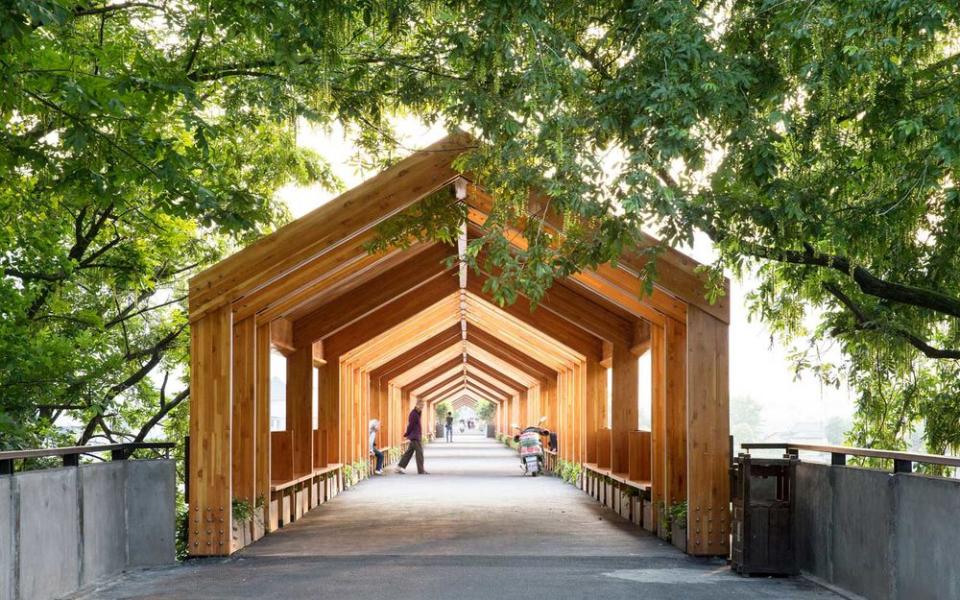
In China’s eastern Zhejiang province, rural Songyang County has quietly become an architecture lover’s dream. Since 2014, architect Xu Tiantian has been radically overhauling the region’s villages, bringing over a dozen serene, striking buildings that serve as both tourist draws and community hubs. Her work distills local tradition and culture, putting an artistic, visitor-friendly spin on seemingly workaday buildings like a brown sugar factory or a pedestrian bridge. Xu’s firm will unveil two new projects, a poetry museum and a maritime museum, in the region in early 2020. In the meantime, her “architectural acupuncture” strategy has brought a burst of energy to the area, increasing tourism 75-fold, according to China Daily, and paving the way for arrivals like the two-year-old destination bookstore Chenjiapu Librarie Avante Garde, Stray Bird hotel, and the 33-room Lanshu Mountain House, which opened in June. The rural revival has been so successful that Songyang recently hosted a UN forum to share its development approach with leaders from around the globe, and in November, Lishui implemented new regulations to ensure the preservation of traditional villages. With a new Lishui airport in the pipeline for 2021, this architectural wonderland is headed for even greater heights—plan your trip now to beat the (American) crowds. — Lila Harron Battis
45. Sri Lanka
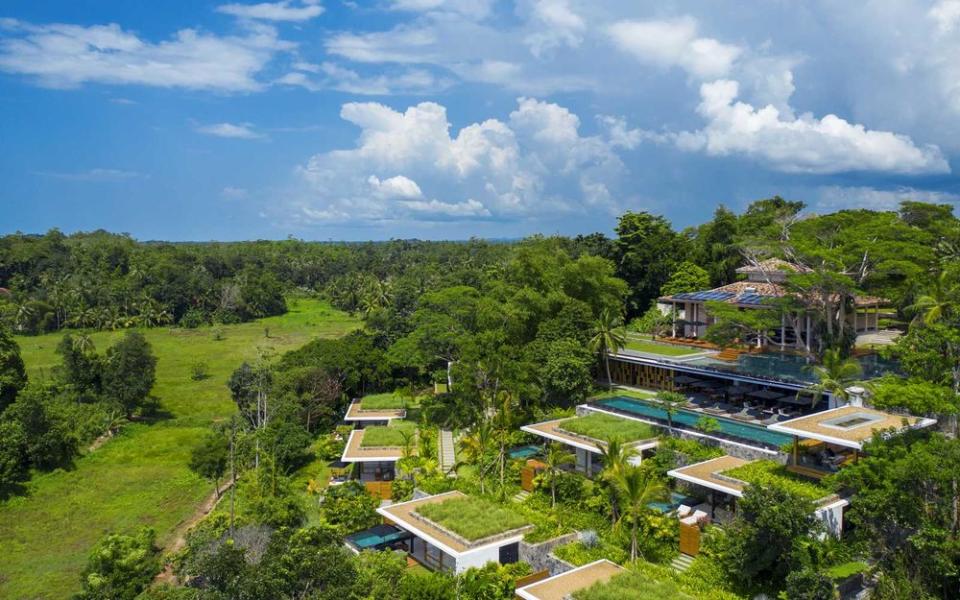
Sri Lanka has long been popular among surfers and adventure travelers. Though the country is still on the mend after last Easter’s bombings in Colombo, a new crop of resorts opening in 2020 make the island nation a luxury destination to be reckoned with. Haritha Villas & Spa, for one, debuts in December. It’s an elegant property located in Hikkaduwa, a resort town known for surfing, beaches, and sea turtles. Guests can enjoy infinity pools overlooking private gardens and one-of-a-kind treatments at the property’s jungle spa. Alila Koggala, a new sustainable resort located near the city of Galle, is set to open in fall 2020, offering 40 sleek suites and villas, plus guided excursions to nearby rain forests. —Madeline Diamond
46. St. Bart’s

When Hurricane Irma pummeled St. Bart’s in 2017, it put most of the French territory’s hotels out of commission. But after a slew of improvements and renovations, the island is back in business. November marked a new chapter for the fabled Eden Rock, which originally opened in the 1950s as the first luxury hotel in St. Bart’s. Fresh off a two-year overhaul, the island’s iconic resort harks back to its early days with 37 beachy-retro rooms featuring bold colors and midcentury modern furniture. A brand-new spa offers seaside treatments featuring locally made Ligne St. Barth products. In Gustavia, Barrière, the hotel group behind Le Majestic in Cannes, will debut Le Carl Gustaf in February. Situated on a hillside, the 23-room property will feature suites with sea-view terraces and private plunge pools, as well as the restaurant Shellona, which marries Mediterranean and Caribbean culinary traditions. —Scott Bay
47. Taiwan’s Mountains

You know it as a destination for bubble tea, buzzy night markets, and the modern metropolis of Taipei. But in 2020, Taiwan is shining a light on one of its most prized yet overlooked treasures: its mountains. Seventy percent of the island is covered with craggy peaks, but until recently, red tape made hiking permits tough to come by. Now the government has streamlined the application process, and to celebrate, the Taiwan Tourism Bureau collaborated with the Construction and Planning Agency to identify 24 trails that showcase the very best of the island’s scenery, such as the Lake Jiaming National Trail, which runs through a hemlock forest, and the Nenggao Cross-Ridge Historical Trail, an ancient trade path used by the indigenous Atayal and Seediq tribes. Luxury operator Remote Lands just launched an itinerary that takes visitors deep into Taiwan’s rugged terrain, from touring the dramatic Taroko Gorge — the island’s Grand Canyon — to tasting whiskey at Kavalan Distillery in the mountains of verdant Yilan County. And enjoying the great outdoors is made even more pleasurable at the brand-new Hoshinoya Guguan, where private outdoor baths are fed by the mineral-rich hot springs of the Central Mountain Range. — Chadner Navarro
48. Tasmania
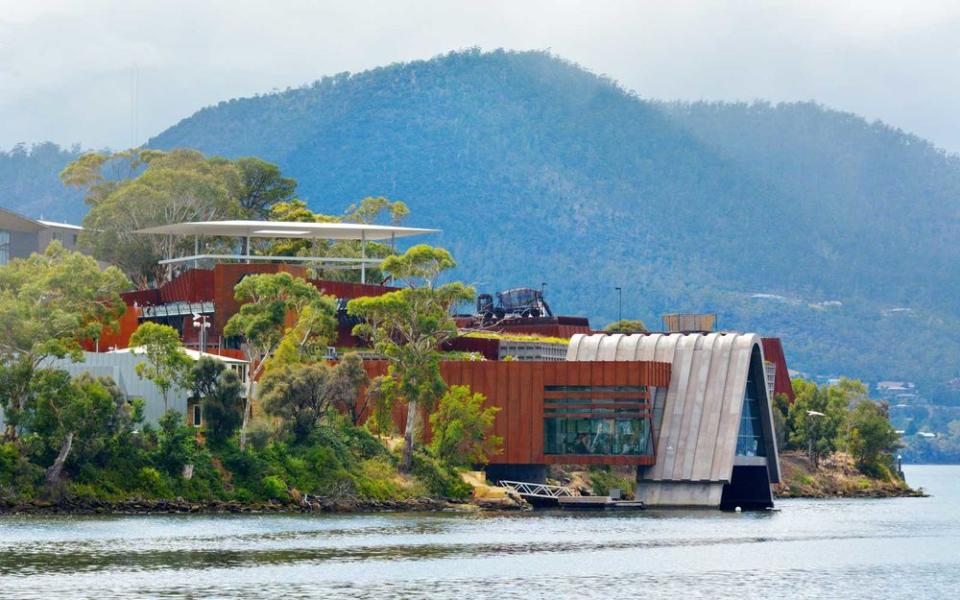
This heart-shaped Australian island rose to international prominence in 2011 with the opening of the quirky-cool Museum of Old and New Art in southeastern capital city of Hobart. Now the Tamar Valley in the state’s central north region is beginning to attract travelers with its zippy sparkling wines, balanced chardonnays, and easy-drinking pinot noirs. The region is also experiencing a boutique-property boomlet. One of the most promising new options: the charming seven-suite Ship Inn Stanley. Housed inside a refurbished building from 1849 that at one point also served as a pub for the seaside town of Stanley, the inn celebrates local history, decorating rooms with maritime antiques and custom artwork. Some small winemakers have also branched out to offer their own accommodations. The husband-and-wife team behind Loira Vines recently introduced The Shed, a well-appointed studio apartment on their five-and-a-half acre vineyard. —Sarah Bruning
49. Tbilisi, Georgia

This city’s creative groundswell has been building for a few years now, with young designers, chefs, architects, and artists — many of whom never knew life under the USSR — lending a palpable energy to the place. Georgian design, its profile boosted by Balenciaga creative director Demna Gvasalia, is on full display at the city’s surfeit of concept stores — find many of them, such as clothing atelier Flying Painter, at the mixed-use development Fabrika, which occupies a Soviet-era clothing factory. And “new Georgian” cuisine is finding its footing as young chefs bring traditional foods into the 21st century, with a glut of wine bars and standout restaurants like Shavi Lomi, Keto and Kote, and Kharcho (located inside a new creative hub and workspace called Art House). There are also an outsize number of excellent hotels for a city so small. Fabrika houses a colorful hostel, the brainchild of Adjara Group, also responsible for the trendy Rooms Hotels and the soaring, sensual Stamba, opened in 2018 inside an old Soviet printing factory. Next year, Stamba will expand its photography museum, which displays work by Georgian artists. Others followed in Adjara Group’s wake, with the opening of several small properties including a Moxy and the colorful City Wine Hotel, an offshoot of favorite wine bar g.Vino. If all goes according to plan, 2020 will see the opening of a Kempinski in Tbilisi — a gleaming, glass complex on Mount Mtatsminda that will shout to the world that Tbilisi has arrived. —Hannah Walhout
50. Turks & Caicos

To say that Turks and Caicos is having a moment would be an understatement. The country — home to more than 40 picturesque islands and cays — is less than a four hour flight from New York City and under two hours from Miami, and with new flights from Southwest and JetBlue, it’s easier than ever to get to one of its jaw-dropping resorts. For private island indulgence, consider the December opening of Ambergris Cay, where a charter plane will transport you from the international airport to untouched, white-sand beaches away from the crowds. For a family vacation, Turks and Caicos’ first all-suite resort, Grace Bay Club, has bounced back from Hurricane Irma, and is home to hot-ticket, oceanfront restaurants and exclusive kids’ and teen excursions like a treasure hunt and mermaid encounter. And at the recently redesigned Seven Stars Resort and Spa, you can relax with a beachside massage as the sounds of the ocean lull you into an even deeper state of relaxation. —Tanner Saunders

